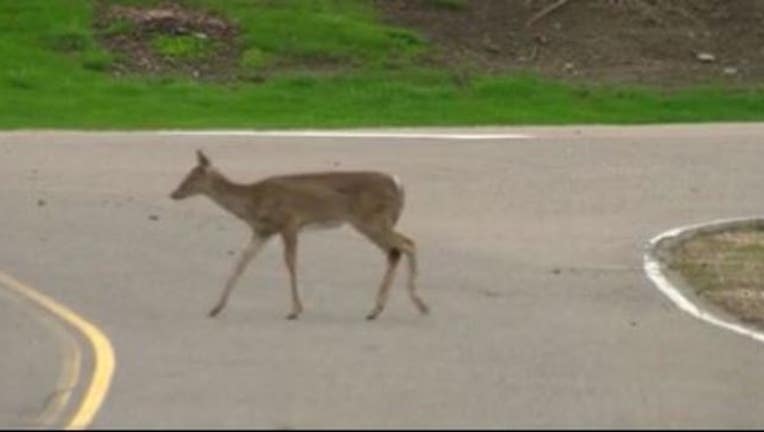Minnesota one of top 10 worst states for deer crashes, study says

(KMSP) - Minnesota is one of the top 10 worst states for motorists being hit by a deer, according to a recent study from State Farm Insurance.
Minnesota drivers have a one in 74 chance of hitting a deer, the study found. Deer crashes are especially dangerous for motorcyclists, according to the Minnesota Department of Public Safety. Four motorcyclists have already died in deer collisions this year and motorcyclists accounted for 14 of the 15 deer-related deaths in 2013-2015.
Wisconsin also cracked the top 10 as the fifth worst state for motorists being hit by a deer. Drivers in the Dairy State have a 1 in 72 chance of hitting a deer.
Fall – mating season for deer – is the most dangerous time from drivers on the roads. In October, November and December, drivers are more than twice as likely to collide with a deer or other large animal, like elk, moose or caribou.
The Minnesota Department of Public Safety offers the following tips to avoid deer crashes:
- Be especially cautious from 6 to 9 p.m., when deer are most active
- Use high beams as much as possible at night, especially in deer-active areas
- Motorists: Don’t swerve to avoid a deer. Swerving can cause motorists to lose control and travel off the road or into oncoming traffic
- Motorcyclists: Avoid night and low-light riding periods. Riders are encouraged to wear full face helmets and full protective gear to prevent injury or death in a crash.
- Slow down in areas known to have a large deer population — such as areas where roads divide agricultural fields from forest land; and whenever in forested areas between dusk and dawn.
- Deer do unpredictable things — they stop in the middle of the road when crossing; cross and quickly re-cross back; and move toward an approaching vehicle. Blow horn to urge deer to leave the road. Stop if the deer stays on the road, don’t try to go around it.
- Watch for the reflection of deer eyes and for deer silhouettes on the shoulder of the road. If anything looks slightly suspicious, slow down.
- If a deer is struck but not killed by a vehicle, keep a distance as deer may recover and move on. If a deer does not move on, or poses a public safety risk, report the incident to a DNR conservation officer or other local law enforcement agency.

